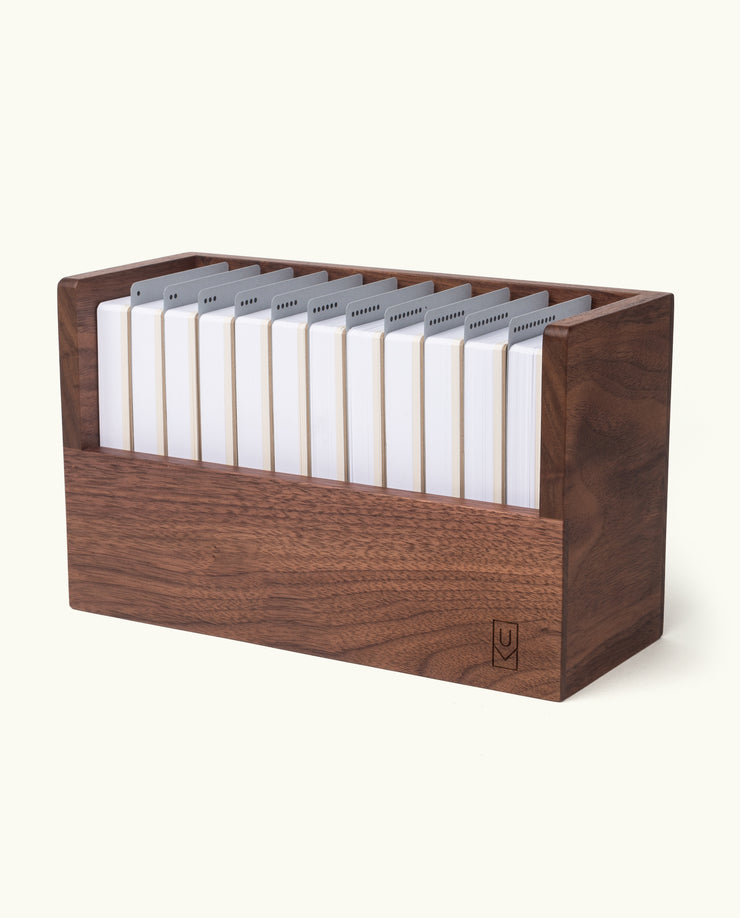Howard L. Wilson, creator of the Memindex system starting 1903 and in wide use through the 1950s, would be proud that a modern variation of his system is still living in analog form. While it doesn't provide the bench depth of options of materials and sizes, the system is compact, modern, and just as simple as the original. The handcrafted archive boxes now bring the system up to par with its predecessor with grace and an elegant minimalistic esthetic.
Perhaps in a few years we might see something akin to Yawman & Erbe or Shaw-Walker's 16 drawer filing cabinets for long term storage of multiple years?




